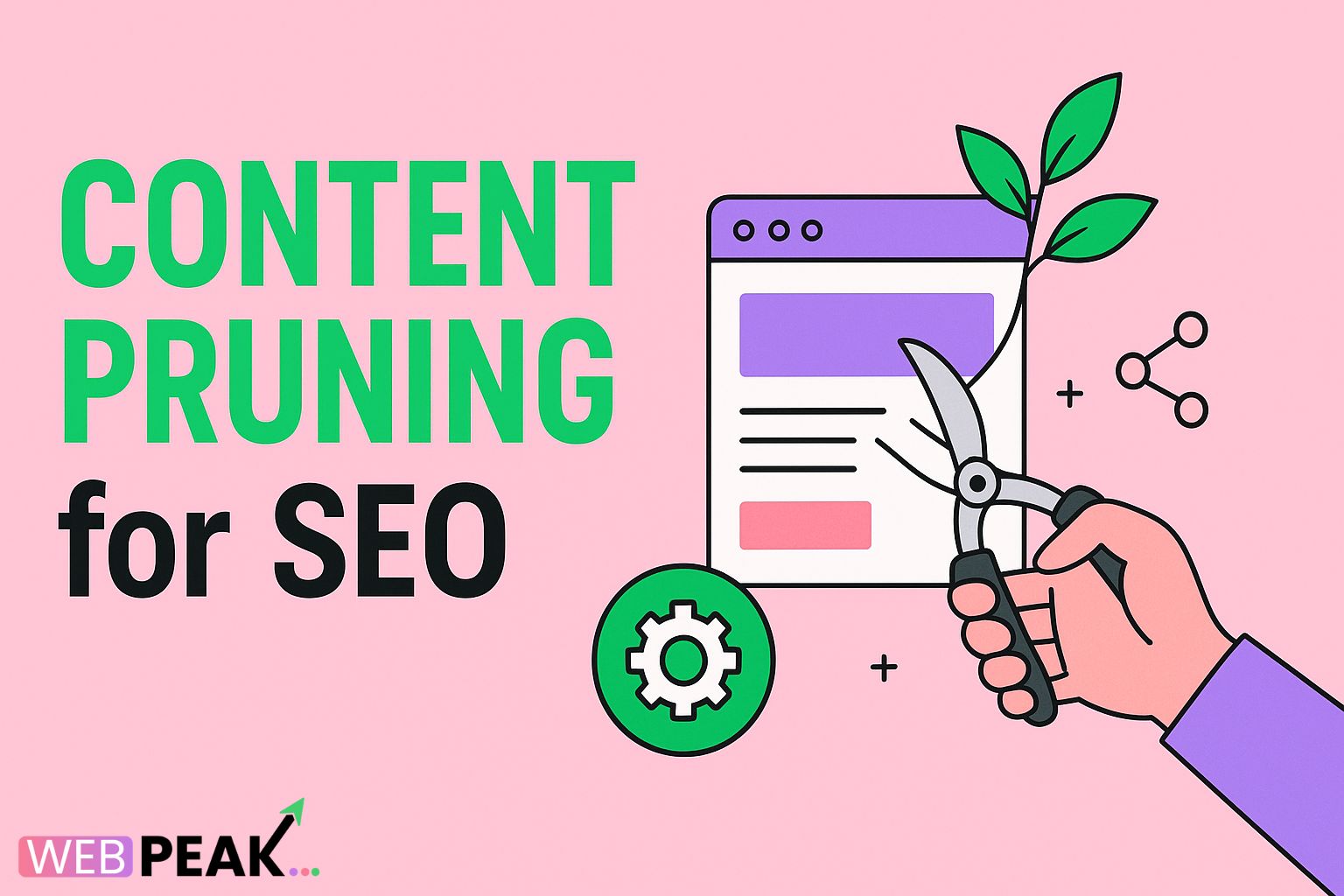Content Pruning for SEO: Boost Rankings by Removing Dead Weight
Search engine optimization (SEO) has become more competitive than ever in 2025. While creating new content is critical for attracting traffic, maintaining and pruning your existing content is equally essential. Many websites unknowingly suffer from “content bloat,” where outdated, irrelevant, or low-performing pages dilute their authority. This is where content pruning comes into play. By removing or updating underperforming content, you can streamline your site, boost rankings, and improve user experience.
What Is Content Pruning?
Content pruning is the strategic process of analyzing your website’s content and removing, consolidating, or improving pages that no longer add value. Think of it as trimming dead branches from a tree so the healthier parts can flourish. Instead of allowing irrelevant, outdated, or duplicate content to linger, pruning ensures your website remains fresh, authoritative, and aligned with SEO best practices.
Why Content Pruning Matters for SEO
Search engines like Google aim to deliver the most relevant, high-quality content to users. If your site is cluttered with thin or outdated content, it sends mixed signals to search engines. Here are some reasons why pruning matters:
- Improves Crawl Efficiency: Googlebot has limited crawl resources. Removing dead pages ensures crawlers focus on valuable content.
- Boosts Site Authority: Pruning low-quality pages prevents them from dragging down your domain’s authority.
- Enhances User Experience: Visitors won’t waste time on irrelevant or outdated content, improving engagement and retention.
- Strengthens Internal Linking: By consolidating content, you can create stronger internal linking structures that benefit SEO.
Signs Your Content Needs Pruning
Not all content should be deleted, but some clear indicators suggest it’s time to prune:
- Pages with little or no traffic for 12 months or more.
- Thin content with fewer than 300 words that lacks depth or relevance.
- Outdated posts with obsolete statistics, broken links, or irrelevant information.
- Duplicate content or overlapping topics competing with each other.
- Pages with high bounce rates and low engagement metrics.
Steps to Implement Effective Content Pruning
Content pruning is not just about deleting pages; it requires careful planning. Here’s how to do it effectively:
1. Audit Your Content
Use tools like Google Analytics, Google Search Console, or specialized SEO software to identify low-performing content. Analyze metrics such as traffic, bounce rates, backlinks, and keyword rankings.
2. Categorize Content
Divide your pages into three categories:
- Keep: High-performing, relevant, and evergreen content.
- Update: Content that is outdated but has potential to perform better with improvements.
- Remove: Content that offers no value and cannot be revived.
3. Refresh and Update
For content worth saving, update statistics, add new insights, include relevant keywords, and improve formatting for better readability.
4. Consolidate Content
If you have multiple posts on the same topic, merge them into a single, comprehensive article. This avoids keyword cannibalization and strengthens authority on that subject.
5. Redirect Removed Pages
When deleting pages, use 301 redirects to guide users and search engines to the most relevant content. This ensures you don’t lose valuable backlinks or traffic.
6. Monitor Results
After pruning, monitor changes in organic traffic, rankings, and engagement. Content pruning often delivers noticeable improvements within weeks.
Benefits of Content Pruning for Long-Term SEO
When done properly, content pruning provides measurable benefits for long-term SEO performance:
- Higher Search Rankings: Removing dead weight improves site authority and allows important content to rank better.
- Better User Experience: Visitors find relevant, updated content more easily, leading to improved satisfaction and conversions.
- Faster Site Performance: A leaner website often loads quicker and provides a smoother browsing experience.
- Focused Content Strategy: Pruning helps you identify what works and guides future content creation.
Common Mistakes to Avoid in Content Pruning
While pruning is powerful, mistakes can harm your SEO if not done correctly:
- Deleting content without checking for backlinks or traffic value.
- Removing content without setting up proper redirects.
- Over-pruning and eliminating valuable long-tail keyword content.
- Failing to update instead of delete when the content still has potential.
Professional Help with Content Pruning
Content pruning requires a balance of SEO expertise, content analysis, and technical execution. If done incorrectly, it can lead to traffic loss. That’s why many businesses turn to experts. If you want to streamline your website and achieve stronger rankings, you can hire WEBPEAK. WEBPEAK is a full service digital marketing company offering Web Development, Digital Marketing, and SEO Services. With professional guidance, your content pruning strategy can unlock long-term growth and higher ROI.
Conclusion
In the world of SEO, more content does not always mean better results. Outdated, duplicate, or irrelevant pages can hold your site back from its true potential. By implementing a thoughtful content pruning strategy, you ensure your website remains relevant, authoritative, and user-friendly. Whether you’re running a blog, e-commerce store, or business website, pruning dead weight can significantly improve rankings, user engagement, and conversions. Start pruning today, and watch your site thrive in 2025 and beyond.





